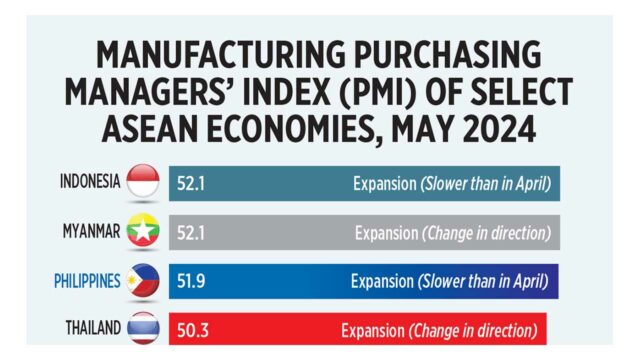Peace processes
There is much talk about war and peace these days all over the globe. The Shangri-La forum and the plan to have talks in Switzerland are attempts to arrive at some progress toward peace. Our president, Ferdinand Marcos, Jr., was a keynote speaker at the Shangri-La dialogues where leaders of nations of various persuasions shared views and debated. This included China’s Defense Minister with Marcos; and Russia with Ukraine’s president, Vo-lodymyr Zelenskyy.

Interestingly, Mr. Zelenskyy quietly came to Malacañang the other day to meet with Mr. Marcos Jr. whom he had met in Singapore.
It made me curious about the processes that our own leaders engaged in that led to the end of the war between the Muslim rebels in Mindanao and the Philippine government. Perhaps there are some things we can learn from them, and share. I was able to chat with then Presidential spokesman Edwin Lacierda and Presidential Peace Process Adviser Ging Quintos Deles who were part of then-President Benigno “PNoy” Aquino III’s hush-hush trip to Japan.
Although the initiative for negotiating peace with the Muslim rebels was first taken by the government of President Fidel V. Ramos in 1996, it took 15 years for serious negotiations to again be pursued. The ousting of President Joseph Estrada, the tribal conflicts in Mindanao, including the Ampatuan massacres, and the rivalry between Nur Misuari’s Moro National Liberation Front (MNLF) and the Moro Islamic Liberation Front (MILF) stalled the negotiations.
In 2011, a year after he was inaugurated as president, PNoy Aquino made the bold, out-of-the-box decision to meet one-on-one with the leaders of the MILF. The initiative was done very quietly, and only a few cabinet members and the peace negotiators were part of the secret moves which featured a face-to-face meeting between Aquino and the MILF leadership: Chair Al Haz Murad Ibrahim, and chief negotiator Mohagher Iqbal who was the MILF chair in the 1996 initiatives.
The International Contact Group (ICG), consisting of diplomats and NGO leaders from Norway, Saudi Arabia, Turkey, the UK, and Japan, provided assistance for the PHL-MILF negotiations. Then Presidential Peace Adviser Ging Deles calls them “Friends of the peace process.” The ICG offered two venues for the proposed meeting. One in Norway, and the other in Japan. President Aquino chose Japan since it is nearer, he said.
The meeting took place on Aug. 4, 2011, at a hotel near Narita airport. The next morning, President Aquino and his team returned to Manila where, once the news had broken, politicians and many media entities were highly critical, calling the President’s move unconstitutional, against “protocol,” etc., etc.
It seems to me that since Mr. Aquino was not running for reelection, he didn’t have to be affected by those criticisms. The six years we allow presidents to serve in our Constitution can be constructive, as it was in the case of Mr. Aquino who had, by the end of his term, accomplished the highest government funding in our history and peace in Mindanao. At the same time, six years under an irresponsible president can be destructive. We are still dealing with budget problems from corruption and impulsive decisions (such as doubling the salaries of uniformed personnel) under President Rodrigo Duterte.
This seems to me to be the problem of Israel’s Prime Minister Benjamin Netanyahu and US President Joe Biden who are both running for re-election. Netanyahu has to please the voters of his right-wing political allies who do not want compromises with the Hamas. Biden’s position of criticizing Netanyahu’s genocidal attacks on Gaza are inconsistent with the US’ support of Israel through providing arms — which are also used on civilians.
Presidential Peace Adviser Ging Deles had endorsed Marvic Leonen to be the head of the government’s negotiating team. When he was appointed to the Supreme Court, his deputy, Miriam Coronel Ferrer, took over. Ms. De-les says there was good rapport and trust between President Aquino and MILF Chair Murad Ibrahim. Ms. Deles emphasizes that it also helped that there were “friends of the process” and a facilitator (Malaysia).
She revealed that Miriam Coronel Ferrer has been writing a book about the processes which should be out soon.
The MILF modified its demand for secession to one for autonomy. The Bangsamoro Autonomous Region of Muslim Mindanao (BARMM) was processed into law which was finally signed in 2019.
That year, the areas under BARMM had a poverty incidence of more than 60%, and the highest infant mortality and maternal mortality in the country. There was also very high malnutrition.
Today, hopefully, under its own elected officials and in an environment of peace, our minority population of Muslims in Mindanao will have a better life, to their own increasing satisfaction.
Teresa S. Abesamis is a former professor at the Asian Institute of Management and fellow of the Development Academy of the Philippines.














